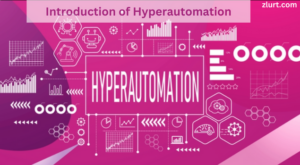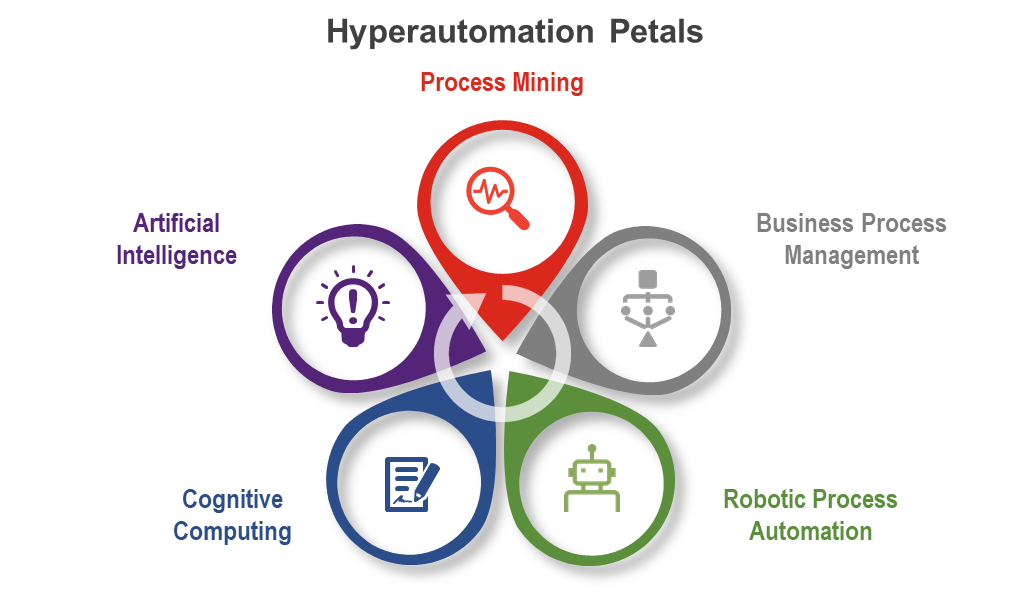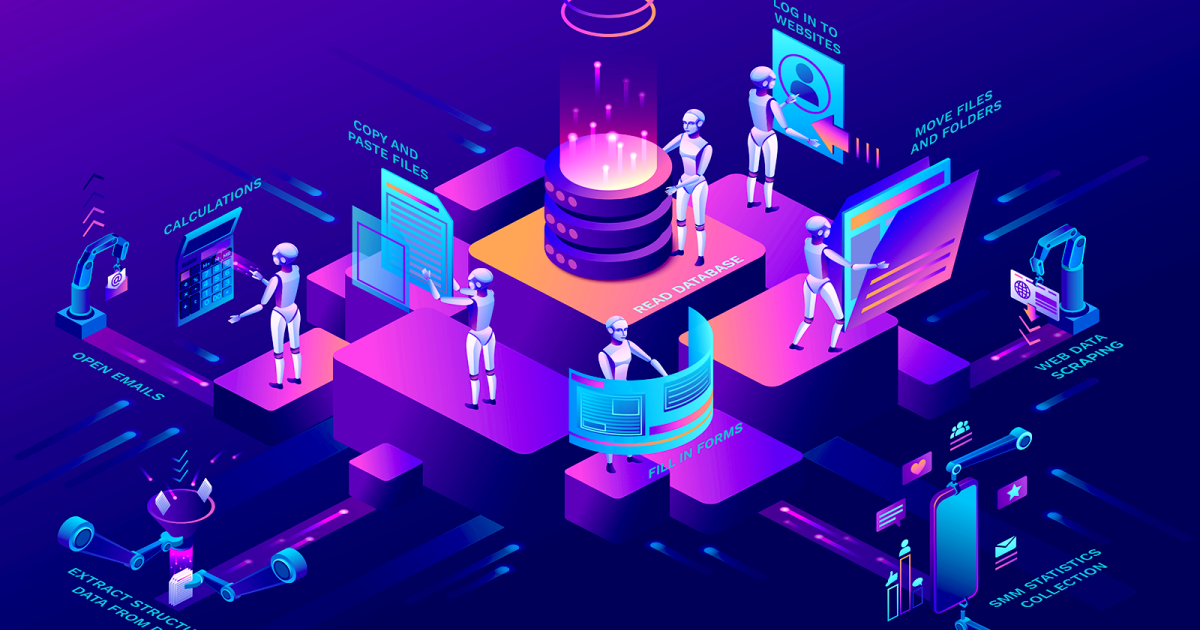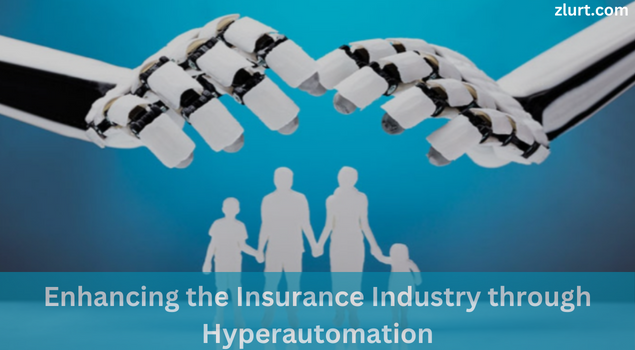Enhancing the Insurance Industry through Hyperautomation Insurance assiduity plays a vital part in mollifying pitfalls and furnishing fiscal protection to individualities and businesses. still, traditional insurance processes can be time-consuming, resource-ferocious, and prone to crimes. In recent times, the emergence of hyper-automation has presented a transformative occasion for the insurance sector. By combining artificial intelligence( AI), machine literacy( ML), robotic process robotization( RPA), and other advanced technologies, hyperautomation has the implicit to revise insurance operations, ameliorate client gests, and drive functional effectiveness. In this composition, we will explore the concept of hyper-automation and bandy its colorful operations and benefits within the insurance assiduity.

Understanding Hyperautomation
Hyperautomation refers to the integration of robotization technologies, similar to AI, ML, RPA, natural language processing( NLP), and intelligent data prisoner, to streamline and automate complex business processes. It involves the use of software bots and algorithms to perform repetitious tasks, dissect data, make opinions, and execute conduct, thereby accelerating mortal capabilities and perfecting overall effectiveness.
Benefits of Hyperautomation
Increased effectiveness and Productivity Hyperautomation eliminates homemade and repetitious tasks, freeing up mortal coffers to concentrate on further value-added conditioning. This leads to bettered productivity and functional effectiveness.
Enhanced Accuracy and Quality By minimizing mortal crimes, hyper-automation ensures lesser delicacy and thickness in business processes, performing in advanced-quality labors.
Scalability and Inflexibility Hyperautomation enables associations to gauge their operations painlessly, accommodating increased workloads and conforming to changing business conditions.
Cost Optimization With the reduction of homemade trouble, hyper-automation reduces functional costs and enhances overall cost-effectiveness.
bettered client Experience By automating and optimizing processes, hyper-automation enables associations to deliver brisk, more accurate, and substantiated services, accordingly enhancing the client experience.
Enforcing Hyperautomation
Identify Process Campaigners Organizations should assess their workflows to identify processes suitable for hyper-automation. This involves assessing complexity, volume, rule-ground nature, and implicit ROI.
Design and Development The named processes are also anatomized, redesigned, and automated using a combination of RPA, AI, ML, and other applicable technologies.
Integration and Deployment Hyperautomation systems are integrated with being IT structure and stationed with proper testing and confirmation.
Nonstop monitoring and enhancement Regular monitoring, data analysis, and feedback circles ensure that hyper-automation systems remain optimized and adaptable to evolving business requirements.
Challenges and Considerations
Organizational Change enforcing hyper-automation requires a shift in mindset and artistic change across the association, as it impacts job places, liabilities, and workflows.
Data Security and Sequestration Hyperautomation relies on vast quantities of data, challenging robust security measures to cover sensitive information and misbehaving with applicable regulations.
Skill Set and Talent Associations need to invest in upskilling workers and hiring professionals with moxie in hyper-automation technologies.
Ethical Considerations Hyperautomation raises ethical questions, particularly when it comes to the use of AI and ML algorithms. Organizations must ensure responsible and ethical perpetration.
Real- World operations
Hyperautomation finds operations across colorful diligence, including finance, healthcare, manufacturing, client service, force chain operation, and more. exemplifications include automated tab processing, claims operation in insurance, patient data analysis in healthcare, and demand soothsaying in retail.
Streamlining Claims Processing
Claims processing is a critical function within the insurance assiduity. Hyperautomation can significantly enhance this process by automating colorful ways, similar to data birth from claim forms, confirmation of policyholder information, fraud discovery, and computation of claim quantities. By using AI and ML algorithms, insurance companies can dissect literal claims data to identify patterns, describe fraudulent claims, and expedite the agreement process. Hyperautomation can also enable the integration of third-party data sources, similar to medical records or rainfall data, to grease brisk and more accurate claims assessments.

robotization enforcing robotization can significantly speed up the claims process. This can involve using optic character recognition( OCR) technology to prize applicable data from claim forms and documents, automatically colonizing fields, and reducing homemade data entry. robotization can also be used for claim adjudication, where rule-grounded systems can estimate claims against predefined criteria and flag suspicious or fraudulent claims for further review.
Electronic Data Interchange( EDI) espousing EDI norms allows for flawless electronic communication and data exchange between different parties involved in claims processing, similar to insurers, healthcare providers, and third-party directors. EDI eliminates the need for paper-grounded attestation and homemade data entry, reducing crimes and accelerating the overall claims process.
Integration and interoperability icing flawless integration between different systems, similar to claims processing software, client relationship operation( CRM) tools, and electronic health record( EHR) systems, can enhance effectiveness and streamline the inflow of information. Integrating these systems allows for real-time data exchange, barring the need for indistinguishable data entry and reducing crimes.
Prophetic analytics using prophetic analytics can help identify patterns and anomalies in claims data, allowing for early discovery of implicit fraud or crimes. By assaying literal claims data, prophetic models can flag claims that are likely to be fraudulent or bear fresh scrutiny, enabling claims processors to prioritize their review sweats.
tone- service doors furnishing tone- service doors to policyholders, healthcare providers, or heirs allows them to submit claims online, track the status of their claims, and access applicable information. tone- service doors reduce the need for homemade intervention and give real-time updates, perfecting client satisfaction and reducing executive outflow.
Mobile operations Developing mobile operations that enable policyholders or healthcare providers to capture and submit claim information directly from their smartphones can expedite the claims process. Mobile apps can integrate with erected-in device features similar to cameras and GPS to streamline the prisoner and verification of information.
Intelligent document operation exercising intelligent document operation systems can automate the bracketing, indexing, and routing of claim documents. These systems frequently employ machine literacy algorithms to fete and prize applicable data from documents, reducing homemade trouble and perfecting delicacy.
Real-time analytics and reporting enforcing real-time analytics and reporting capabilities allows claims processors to cover crucial performance pointers, identify backups, and proactively address issues. Real-time perceptivity enables timely decision-making and helps optimize the claims process.
nonstop process enhancement Regularly reviewing and enriching claims recycling workflows and relating areas for enhancement is essential for streamlining operations. By assaying process criteria, collecting feedback from stakeholders, and enforcing iterative changes, associations can enhance effectiveness and reduce processing times.
Perfecting Underwriting and threat Assessment
Underwriting is another area where hyper-automation can bring significant benefits. By automating the collection and analysis of vast quantities of data, including client information, literal claims data, credit scores, and external data sources, insurers can streamline the underwriting process. AI-powered algorithms can assess pitfalls, determine applicable content situations, and price programs more directly. This not only increases functional effectiveness but also results in further substantiated programs that better align with individual client requirements.
Enhancing client Experience
Hyperautomation can revise the client experience in the insurance assiduity. By exercising chatbots and virtual sidekicks powered by NLP, insurers can give instant responses to client queries, guide them through policy selection, and grease online policy purchases. Hyperautomation also enables the robotization of routine client service tasks, such as streamlining client information, recycling policy changes, and handling decoration payments. This reduces the reversal time, minimizes crimes, and improves overall client satisfaction.
Understand client requirements and preferences Invest in gathering client perceptivity through checks, interviews, and data analysis. Understanding client requirements, pain points, and preferences allows you to confirm your products, services, and relations to meet their prospects effectively.
Personalization influences data and technology to deliver substantiated gests to your guests. Use client data, similar to purchase history, browsing geste, and demographic information, to offer applicable recommendations, customized offers, and substantiated communication. guests appreciate acclimatized guests that make them feel understood and valued.
flawless omnichannel experience gives a flawless experience across multiple channels, including websites, mobile apps, social media, phone, and in-person relations. ensure thickness in branding, messaging, and service quality across all touchpoints. guests should be able to switch between channels painlessly while entering harmonious information and support.
Automating Compliance and Regulatory Processes
The insurance assiduity operates under strict nonsupervisory fabrics, and compliance is a critical aspect of its operations. Hyperautomation can help insurers in automating compliance processes, similar to Know Your Client ( KYC) checks,anti-money laundering( AML) procedures, and nonsupervisory reporting. By using AI-powered algorithms, insurers can dissect client data, identify implicit compliance pitfalls, and ensure adherence to nonsupervisory conditions. This reduces the homemade trouble involved in compliance tasks, minimizes mortal crimes, and enhances the overall effectiveness of nonsupervisory processes.

Enhancing Fraud Detection and Prevention
Insurance fraud poses considerable trouble to insurers, resulting in significant fiscal losses that can impact decorations and consumer trust. To combat this challenge, hyper-automation emerges as a pivotal result, using advanced technologies to describe and help fraudulent conditioning.
Through the comprehensive analysis of expansive datasets, which encompass customer biographies, detailed claims information, and external sources, AI algorithms can effectively identify suspicious patterns and anomalies reflective of fraudulent geste. This intricate examination allows insurers to proactively describe implicit cases of fraud.
Also, hyper-automation facilitates real-time monitoring of insurance claims, furnishing insurers with the capability to instantly identify and probe suspicious conditioning as they do. By detecting implicit fraud attempts before they escalate, insurers can apply applicable measures to alleviate losses and guard their coffers.
In addition to minimizing fiscal impact, the perpetration of hyper-automation in fraud discovery and forestallment can enhance functional effectiveness and streamline claims recycling workflows. This not only protects insurers from fraudulent conditioning but also contributes to a further flawless and secure insurance experience for policyholders.
The integration of hyper-automation technologies into insurance operations represents a visionary approach to combatting fraud, eventually securing the integrity of the insurance assiduity and conserving the interests of both insurers and policyholders.
Optimizing Back-Office Operations
Competitive business geography, optimizing back-office operations is consummate for associations seeking to ameliorate effectiveness and maintain a competitive edge. By enforcing strategic measures and using innovative technologies, companies can streamline their reverse-office processes to achieve lesser productivity and cost-effectiveness.
An aspect of optimizing back-office operations involves automating repetitious tasks and workflows. Through the relinquishment of advanced robotization tools and software results, businesses can significantly reduce homemade intervention in executive tasks similar to data entry, document processing, and report generation. This not only minimizes crimes and improves delicacy but also frees up precious time and coffers that can be diverted towards further strategic enterprise.
Similarly, integrating pall-grounded technologies into back-office systems offers multitudinous benefits in terms of scalability, availability, and collaboration. By migrating data and operations to the pall, associations can exclude the need for an on-demand structure, reduce conservation costs, and enable remote access to critical business coffers. This enables flawless collaboration among geographically dispersed brigades and facilitates nimble decision-making processes.
The aspect of optimizing back-office operations is enhancing data operation and analytics capabilities. By using advanced analytics tools and ways, businesses can gain precious perceptivity from their data to drive informed decision-making and identify openings for process enhancement. Also, enforcing robust data governance practices ensures data integrity, security, and compliance with nonsupervisory conditions.
Also, fostering a culture of nonstop enhancement and invention is essential for sustained success in back-office operations. Encouraging workers to laboriously share in relating inefficiencies, proposing results, and enforcing process advancements can lead to palpable advancements in productivity, quality, and client satisfaction.
Optimizing back-office operations requires a holistic approach that combines robotization, technology integration, data analytics, and a culture of invention. By prioritizing effectiveness, delicacy, and dexterity, associations can streamline their reverse-office processes to achieve sustainable growth and competitive advantage in the moment’s dynamic business terrain.
Leveraging Data Analytics for Business Perceptivity
With the arrival of hyper-automation, insurers now have access to vast quantities of structured and unshaped data. By using advanced data analytics ways, insurers can gain precious perceptivity into client geste, request trends, and threat patterns. This perceptivity can inform product development, pricing strategies, and financing opinions, enabling insurers to stay competitive in a fleetly evolving request.
Conclusion
Hyperautomation holds immense eventuality to transfigure the insurance assiduity by automating processes, enhancing client gests, perfecting threat assessment, and driving functional effectiveness. By using AI, ML, RPA, and other advanced technologies, insurers can streamline claims processing, underwriting, compliance, and fraud discovery. also, hyper-automation enables insurers to optimize back-office operations and influence data analytics for precious business perceptivity. As the insurance assiduity continues to embrace digital metamorphosis, hyper-automation will play a vital part in shaping its future, enabling insurers to deliver innovative products and services while meeting evolving client prospects.




